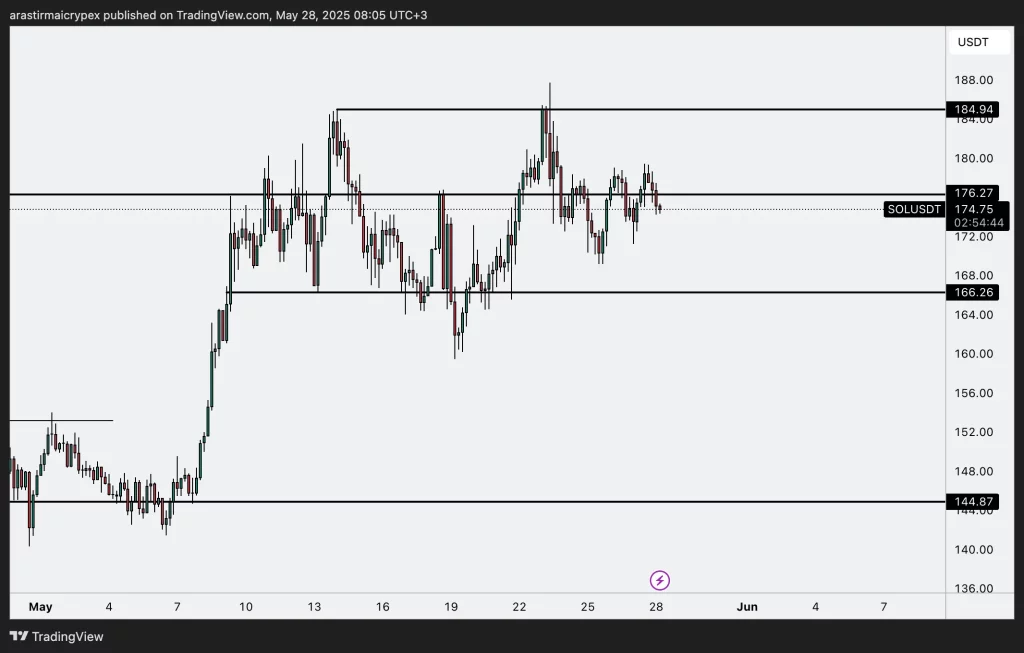Trump Media’s $2.5 Billion Bitcoin Move
Trump Media and Technology Group (DJT), the company known as the owner of Truth Social, announced that it will purchase Bitcoin with a new capital increase of $2.5 billion. Within this scope, an agreement was reached with approximately 50 institutional investors; $1.5 billion of stock and $1 billion of convertible bonds will be sold. The deal is expected to be completed on May 29.
DJT’s crypto move reveals that the company considers Bitcoin as a long-term strategic reserve asset. After the news was heard, DJT shares rose by 10% in the pre-markets, but gave back its gains at the regular session opening.
Circle Files for IPO on NYSE
Circle, the company behind the USDC stablecoin, has filed for an IPO on the New York Stock Exchange. A total of 24 million Class A shares will be offered; of this, 9.6 million will come from the company and 14.4 million from existing shareholders. The unit price of the shares will be in the range of $24-26 and will trade with the ticker symbol “CRCL”.
Circle could earn approximately $250 million from the IPO, and shareholders $375 million. ARK Invest plans to receive $150 million worth of shares from the IPO. Circle, which previously failed to go public via SPAC, is focusing on a direct listing this time.
21Shares Files for Spot SUI ETF in the US
Nasdaq has filed a formal application with the SEC to list 21Shares’ spot Sui ETF. This step begins the regulatory process for the first SUI-based ETF in the US. The SEC must finalize the application by January 18, 2026 at the latest with a decision to accept, reject or postpone. If the ETF is approved, the SUI token will be traded on exchanges in the US.
21Shares has proposed BitGo and Coinbase Custody for SUI custody, but the application did not specify a management fee or ETF symbol. 21Shares, which already has SUI products traded in Europe, wants to expand its SUI-based investment products by expanding to the US market.
US Could Buy More Bitcoin
David Sacks, the US’s artificial intelligence and crypto advisor, stated that the government could increase Bitcoin purchases at the Bitcoin 2025 event. Sacks said that Bitcoin purchases could be possible without adding additional burden to the budget and that existing funds could be redirected for this. He also highlighted the positive steps taken towards crypto in the first 100 days of the Trump administration: Ross Ulbricht’s pardon, the CBDC ban, the end of Operation Choke Point 2.0, and the establishment of a special working group for digital assets.
Sacks argued that energy production is key to the future of AI and Bitcoin, and that the US needs to expand its energy infrastructure. “GPUs and ASICs both need electricity,” Sacks said, adding, “We need to generate more energy to support AI and crypto.”
Cantor Fitzgerald Makes First Bitcoin-Collateralized Loans
Cantor Fitzgerald has officially launched its crypto lending services by providing Bitcoin-collateralized loans to FalconX and Maple Finance. FalconX said it provided more than $100 million in loans, while Maple Finance closed its first-stage financing. The model allows companies to access cash liquidity by providing collateral without selling their Bitcoin. Cantor announced in July 2024 that it had allocated $2 billion in capital for this service.
The crypto lending market, which shrank after the crash in 2022, recovered by the end of 2024 and reached an open debt position of $19.1 billion. While Cantor CEO Howard Lutnick called for Bitcoin to be classified as a commodity, it is known that the firm also manages Tether’s treasury and has a 5% stake in the company.
IMF Wants to Stop El Salvador’s New Bitcoin Purchases
The IMF announced that it will take measures to prevent the amount of bitcoin in El Salvador’s state treasury from increasing. This decision contradicts President Nayib Bukele’s determination to accumulate BTC. El Salvador signed a $1.4 billion loan agreement with the IMF last year and agreed to limit bitcoin activities.
The IMF focuses on minimizing the country’s bitcoin risks within the scope of this agreement. Bukele, on the other hand, stated in his post in March that the BTC purchase would continue. El Salvador’s bitcoin reserve is currently over $357 million in profit. However, the IMF’s new statement has made it uncertain whether the country can continue this strategy.
SharpLink Builds $425 Million Ethereum Treasury
SharpLink Gaming announced that it will create a $425 million Ethereum treasury under the guidance of Consensys CEO and Ethereum co-founder Joseph Lubin. The company will sell 69.1 million shares through private investment, and all of this fund will be converted into ETH and held as the main reserve asset. Lubin said the move was “an opportunity to bring the Ethereum story to the public markets” and will join the SharpLink board of directors.
The strategy has been likened to MicroStrategy’s Bitcoin plan, with former Ethereum developer Eric Conner describing the model as an “ETH flywheel” mechanism that involves the company accumulating and staking ETH and reselling its shares when they exceed the value of ETH. This approach is considered “bullish” because it could create a supply crunch for ETH and contribute to its greater presence on corporate balance sheets.
Standard Chartered Says Solana Could Hit $500 by 2029
Standard Chartered Bank is optimistic about Solana in the long term, while expecting weak performance compared to Ethereum in the short term. According to Geoffrey Kendrick, the bank’s head of digital assets research, SOL could reach $275 by the end of 2025 and $500 by 2029. However, due to the memecoin-focused usage, Solana is expected to trade with low activity and low valuation in the next 2-3 years.
The report stated that Solana has an advantage with its fast and low-cost transaction capacity, while it was emphasized that growth in areas such as financial applications, social media and DePIN will take time. Kendrick also predicts that the ETH/SOL ratio will rise to 17 by the end of 2027. The bank had previously announced targets of $ 200,000 in 2025 and $ 500,000 in 2028 for Bitcoin.
South Korea’s Central Bank Plans Digital Currency to Work with Private Sector Stablecoins
South Korea’s Central Bank is considering issuing deposit tokens that can work on public blockchains. The bank’s Vice President Lee Jong-ryeol said that this system could coexist with stablecoins issued by the private sector. The bank shapes this approach “in line with national interests” and aims to protect monetary sovereignty.
In the first quarter of 2025, $19.5 billion of stablecoins were outflowed from South Korea abroad. This situation increased calls for won-backed alternative stablecoins. However, experts emphasize that technological designs alone are not enough to protect monetary sovereignty, and sound monetary and fiscal policies are also necessary.
————————————————————————————————
BITCOIN (BTC)
BTC is trading at $108,680 as of the morning hours, down 0.08%. Bitcoin has retreated to around 108,901 with sales from 111,861. The 107,319 level is in the intermediate support position and it is important for buyers to defend this area. If this level is broken, the next targets can be monitored as supports at 105.778 and 101.315. For an upward recovery, it is necessary to maintain stability above 111.861. The current structure indicates a horizontal price behavior following profit realizations from the high.
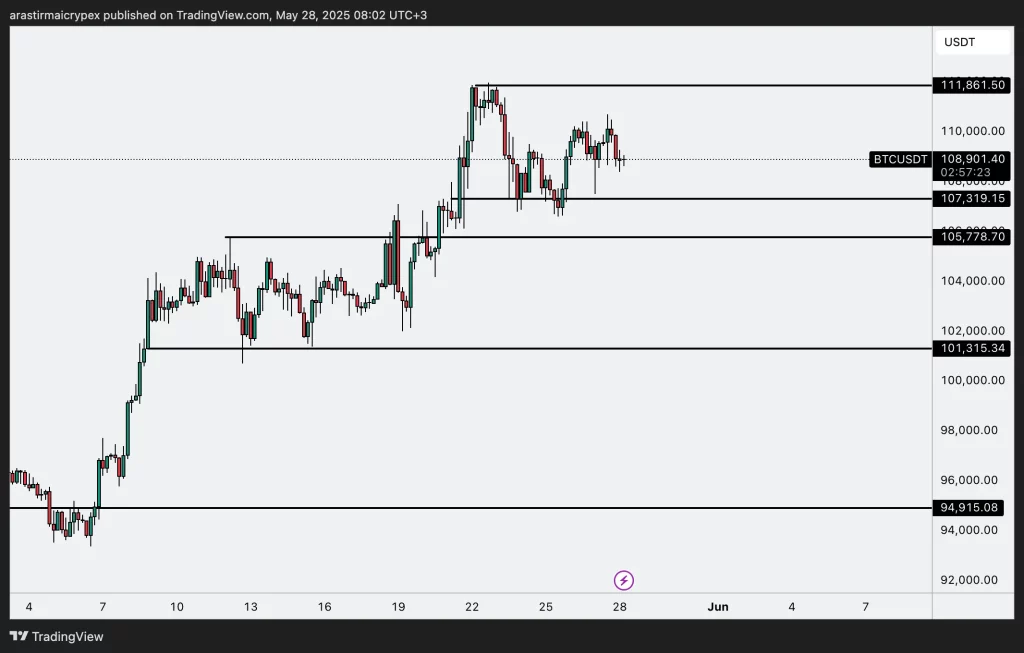
ETHEREUM(ETH)
ETH is priced at $2,640 with a 0.80% loss in value as of the morning hours. Ethereum has been stuck between 2,450 and 2,700 for a while now. The last attack towards 2,700 failed and the price fell back to the middle band, around 2,600. This level is also a psychological threshold. If the price continues to stay below 2,600, the 2,450 support may come back into play. In the opposite scenario, closing above 2,700 could allow the price to advance to targets of 2,850 and above. The search for direction continues in the current structure.
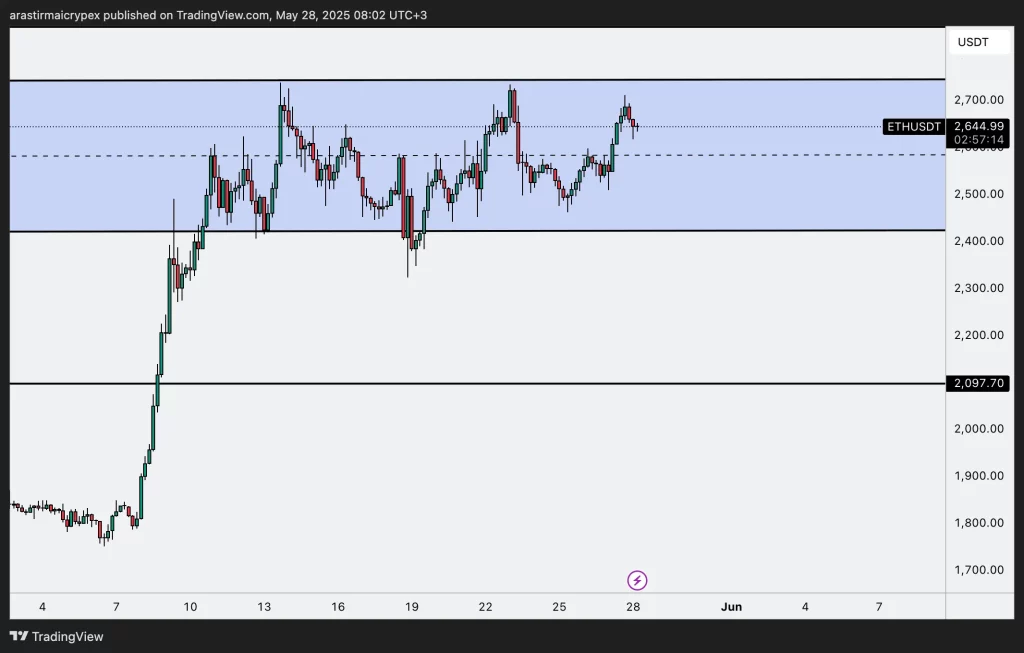
RIPPLE(XRP)
XRP is traded at $ 2,305 with a loss of 0.51% as of the morning hours. XRP is trading in a horizontal squeeze between the 2.2330 and 2.3630 range. The downside structure has been reinforced by the previous heavy sell-off from the 2.4834 level. The price is trading sideways around 2.3108 and this consolidation may determine the next direction. If the 2.3630 resistance is not overcome, the 2.2330 and 2.1139 supports may be tested again. Above, the 2.4834 level maintains its importance as a major resistance.
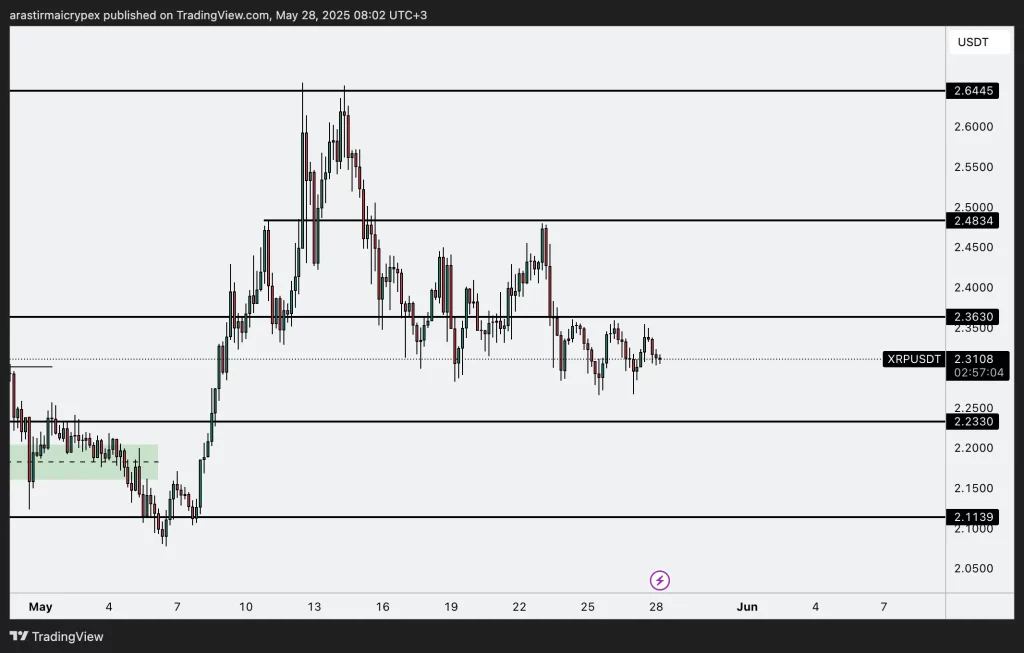
AVALANCHE(AVAX)
AVAX is traded at $23.37 with a 0.01% loss as of the morning hours. AVAX has recovered to 23.46 levels after receiving a reaction from the 22.09 support. However, the price is still moving within a clear horizontal band between 25.96 and 21.03. The 23.50–24.00 range is a critical pivot area as it has worked as both support and resistance in the past. There is currently a horizontal consolidation just below this level. We need to see closes above 24.00 for buyers to take control. Otherwise, the possibility of a new pullback towards 22.09 support remains on the table.
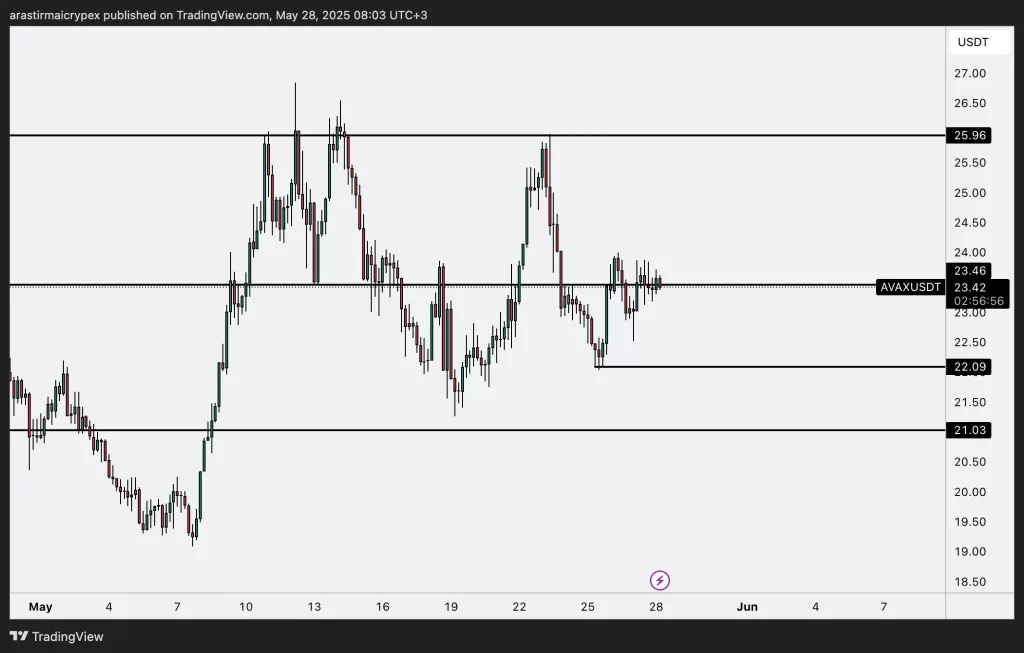
SOLANA(SOL)
SOL is traded at $174.52 with a 1.24% loss in value as of the morning hours. Solana (SOL) is exhibiting a wavy structure near the 176.27 resistance. The price has been following a horizontal and directionless trend within the 166.26 – 184.94 band for about two weeks. This consolidation increases the importance of the 184.94 levels above and 166.26 below. The 176.27 level is working as a short-term resistance and the price is slightly suppressed below this area. If this resistance is not overcome, a correction towards the 166.26 support may be seen again. Otherwise, the 184.94 level will be followed as the next target. The current outlook suggests that the indecision phase continues before a clear breakout.
